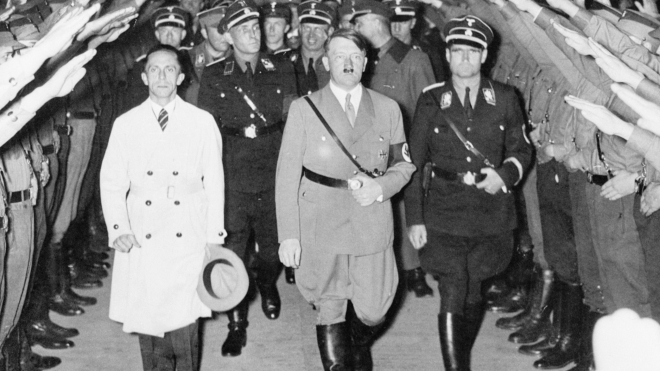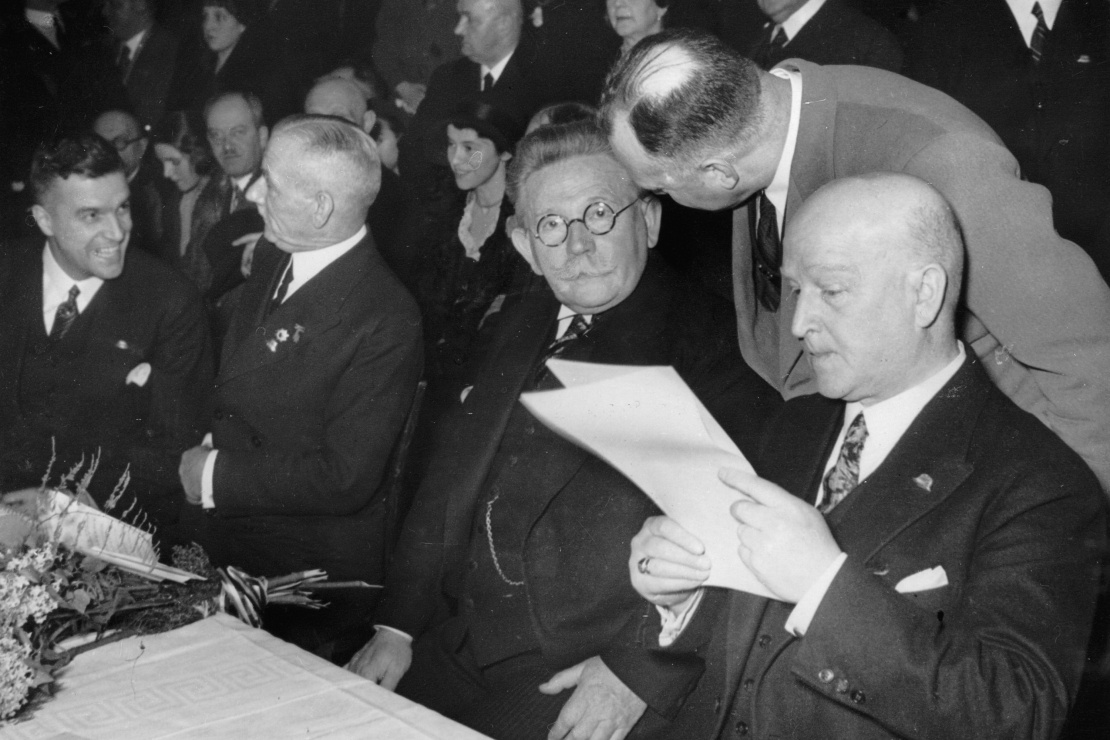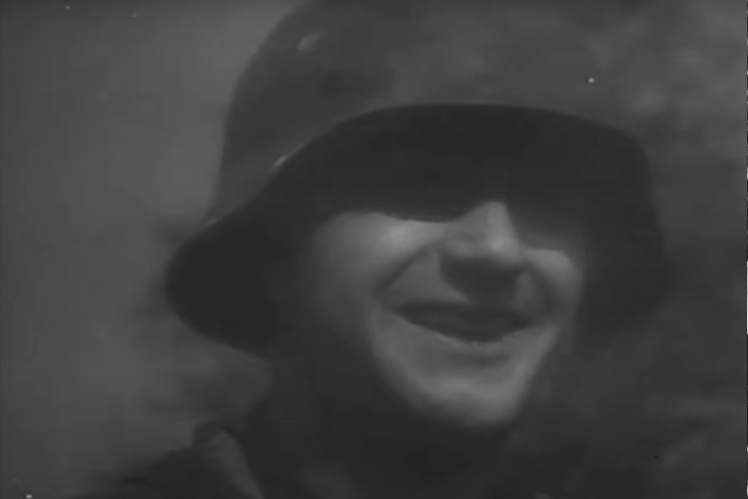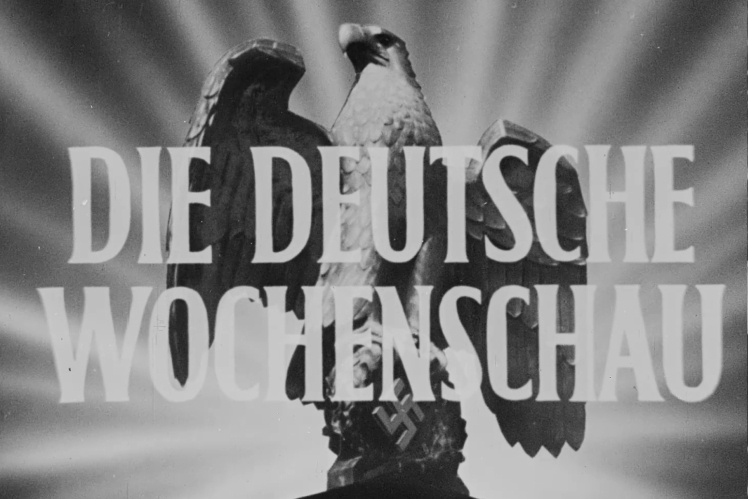What is Die Deutsche Wochenschau
In December 1917, the film company Universum Film AG (UFA) appeared in Germany. Officially, its investor was Deutsche Bank, but in fact part of the funds were provided by the Ministry of War. The initiator of the case was General Erich Ludendorff. As the author of the concept of "total war", which included information warfare, Ludendorff wanted to create a powerful propaganda machine. According to his idea, UFA was supposed to become a media empire that would convey the necessary theses to the audience around the world through cinematography.
In November 1918, Germany lost the First World War and surrendered. The Weimar Republic appeared in place of the empire. Propaganda became unnecessary, and there was no money for it. The UFA film company was later privatized by Deutsche Bank, and it began to cooperate with Hollywood. It was UFA that produced the classic German silent films of the time: Doctor Mabuse (1922) and Metropolis (1927) directed by Fritz Lang
From 1925, UFA began publishing a weekly silent film magazine, Ufa Tonwoche. In the pre-television era, film magazines were the primary news video content. At screenings in cinemas, viewers were shown modern documentary chronicles from different cities and countries. Like a news release, except not too urgent.
By 1927, it became clear that UFA could not compete with American cinema and was spending more on its films than it was earning. The company was on the verge of bankruptcy. It was bought by the owner of the Scherl Group media group, Alfred Hugenberg, who owned the Telegraphen-Union news agency, many newspapers and advertising companies.
In 1928, Hugenberg became the head of the German National Peopleʼs Party, a conservative political force allied with the NSDAP. He used all the power of the Scherl Group to promote both his party and the Nazis. In January 1933, after Adolf Hitler came to power, Hugenberg became the Minister of Economy.
Presidential candidate Theodor Düsterberg (right) and German National Peopleʼs Party leader Alfred Hugenberg. Behind them is Franz von Stefani. Meeting of members of the German National Peopleʼs Party and the Steel Helmet organization. Berlin, March 5, 1932.
Getty Images / «Babel'»
Already in the summer of 1933, Hugenberg left the government and politics in general — he believed that he could argue with the Nazis on certain issues, and they would not touch the "coalition partners". But Hitler quickly purged political positions of all dissenters. Hugenberg, though was allowed to remain a member of the Reichstag. At the same time, his media group was nationalized — private companies were forced to sell their shares to state companies.
UFA became part of the Ministry of Propaganda and Public Education led by Joseph Goebbels. In the same year, 1933, the UFA film magazine became alive. And it turned into a mouthpiece of state propaganda of the Third Reich — promoted anti-Semitism and once a year dedicated an issue to the Führerʼs birthday.
In July 1940, the Ministry of Propaganda united all film magazines in Germany into a single Die Deutsche Wochenschau, which was published once a week and necessarily preceded film screenings in cinemas. For the first few years, it was quite long — for 40 minutes, announcer Harry Giese told how German soldiers marched victoriously through Flanders or Bessarabia. By 1945, the film magazine was significantly reduced — 10-15 minutes of uplifting patriotic information. The last editions of Die Deutsche Wochenschau were published in March 1945, a month and a half before the surrender of Germany.
In addition to various awards of soldiers and officers and short stories about what exactly they were awarded for, each issue told about the situation at the front. It was a sample of pure totalitarian propaganda.
What propaganda told the Germans a few weeks before the end of the war
The last issues of Die Deutsche Wochenschau #754 and #755 were published on March 16 and 22, 1945. And even then, the propaganda told that the German troops were advancing victoriously, only for some reason on the territory of Germany itself. The audience could not find out about the situation on the fronts as a whole — the film magazine highlighted only individual local victories, about which it also often lied.
Little was said about the Western Front. Only that the American troops "lose their Cannes", and the Germans held the bridgehead on the Rior River, and everything will be fine. They showed how Cologne-Aachen Gauleiter Josef Grohe awarded the soldiers. It was a lie — on March 10, the Germans evacuated to the right bank of the Rhine, there was almost no hope of holding the region, and already at the beginning of April, the front collapsed completely. Gauleiter Grohe escaped even earlier — on March 5 he left for Cologne. On the fourth of April, Joseph Goebbels wrote in his diary: "Despite pathetic assurances, Grohe did not defend his Gau. He left it even before the evacuation of the civilian population, and now he is playing a great hero."
The propaganda also lied about the Eastern Front. For example, they told how the Germans were desperately defending the castle in Malbork. But in reality, German troops withdrew from there on March 8 and blew up the bridges across the Nogat River, on which it is located.
The ruined castle in Malbork after the battles of 1945.
Wikimedia / «Бабель»
Sometimes the announcer did not even lie, but simply hurried to call a successful operation that had not yet begun. For example, he said that the German fleet was successfully evacuating ground troops from East Prussia. There really was an evacuation plan from Koenigsberg, in the order dated March 20. But it failed — on March 26, Soviet troops went to the Vistula estuary and cut off the Germans from the ports. The successful defense of Koenigsberg itself, about which the propaganda spoke, was also a half-truth — the Soviet troops simply had not yet begun to storm the city. When the assault finally began on April 6, Koenigsberg fell in three days.
An important plot is the battle for Lauban. In March, German troops launched a large-scale counterattack and recaptured the city. On March 8, Goebbels came to Lauban and made a speech there that this counterattack was only the first step to a large-scale offensive and a radical change in the situation on the Eastern Front. This was the last public appearance of Goebbels.
Lauban was indeed repulsed, and then, according to Hitlerʼs plan, German troops were to advance to the east in order to unblock the surrounded Wrocław. But even the participants of this operation understood that it was impossible. The German officer Hans von Luck, who participated in those events, wrote in his memoirs: "If the "Operation Lauban", as we called this action among ourselves, still had any chance of success, then the lifting of the siege of Breslau was a real utopia, so the "spring offensive" is just pure madness.
In both editions of the film magazine, 16-year-old dispatcher Willy Hubner, a volunteer from the Hitler Youth (Hitler Yugend), was shown. Goebbels first awarded him the Iron Cross II Class in Lauban. Then the boy was flown to Berlin and given a new uniform. On March 20, 1945, he met with Hitler, and this was also shown to the audience.
In general, the heroism of civilians, and especially Volkssturm — militia units that existed since the fall of 1944, was a propaganda feature at the end of the war. From February 1945, women were recruited into the Volkssturm. To prove that there is nothing complicated in military affairs, the propagandists repeated: the panzerfaust is a simple weapon that can be easily used by women and the elderly.
Propagandists passed off archival materials for fresh footage and tried to save the face anyway. For example, they showed how the American police dispersed the protests of workers who "do not want to be slaves of Jewish capital." In fact, it was footage of the Chicago strikes of 1937, but propaganda presented them as a chronicle of 1945.
It was also reported with great pathos that Adolf Hitler himself visited the front to issue orders on the ground. However, where exactly Hitler arrived, how far from the front line and when it was — was not specified. And the footage could be taken at any time.
The last “article” of the last film magazine is the smiling faces of Fannen-junker Schmulke and his soldiers, who, judging by everything, were defending Altdamm on der Oder. On the twenty-second of March, when the audience saw the issue, Altdamm had already been lost for two days.
Fanen-junker Schmulke in the story of the last issue of Die Deutsche Wochenschau. The last shot of Die Deutsche Wochenschau.
YouTube / «Бабель»; Bundesarchiv / «Бабель»
What happened to the authors of Die Deutsche Wochenschau after the war
Actor Harry Giese was the announcer of almost all issues of the film magazine, the propaganda called him Großdeutscher Sprecher — "great German speaker". In addition to Die Deutsche Wochenschau, Giese read voiceovers in many Nazi propaganda films, such as the 1940 documentary The Eternal Jew, an anti-Semitic genocidal film that justified the extermination of the Jews.
After the war, Giese did not come under denazification at all, since he was not formally a member of the NSDAP. Though, he did not have a breakthrough career either — Gieseʼs voice was too recognizable and caused unwanted associations. However, already at the end of the 1950s, he was sometimes called on television, and also — to voice himself in feature films. Giese died in 1991.
Austrian composer Franz Friedl, who wrote music for a film magazine, worked in the GDR at the DEFA film studio after 1945. In 1951, he moved to West Germany, where he worked in the cinema until 1958. He died in 1977.
The news footage for the film magazine was shot mainly by cameramen Hans Ertl and Walter Franz. After the war, Ertl was forbidden to work in Germany, and he moved to Latin America, lived in Chile and Bolivia. He was a climber himself and made documentaries about mountains and other climbers. Then he became a farmer, died in 2000.
Walter Franz filming Hitlerʼs pond near Bad Münstereifel for a film magazine, 1941.
Getty Images / «Babel'»
Walter Franz was more fortunate — he continued to work in Germany. Filmed tourist stories, documentaries about German universities, worked for television. He died in 2004.
Bonus: a propaganda satirical sketch by the duo Tran und Helle
In 1940, together with the issues of Die Deutsche Wochenschau, short satirical videos were shown, which were filmed by the German comedy duo Tran und Helle — actors Ludwig Schmitz and Joseph Hassels. According to the plot of the videos, Schmitz, who played Tran, was a naive German who did not understand the importance of National Socialism. And Hassels as Helle was a proper citizen who pointed out Tranʼs mistakes.
But already in the fall of 1940, the videos stopped being shot. The satire was ill-timed, and the Ministry of Propaganda was worried that the audience would sympathize with the kind and naive Tran. After that, Schmitz was banned from acting in films and on television, although he had been a member of the SS since 1934. After the war, he returned to the screen, starred in several comedies and died in 1954.
His partner Josef Hassels continued his career on television, working as a comedian. He died in 1984.
In one of the March 1940 issues, while the satirical videos were still being filmed, Tran wanted to listen to British news and French music on the radio. But Helle convinced him that a "good German" would never do such a thing. Especially since for that you can go to the prison for two and a half years.
Translated from Ukrainian by Anton Semyzhenko.
Propaganda wins when readers stop trusting real journalism. Support Babel: 🔸 in cryptocurrency 🔸 Patreon 🔸 PayPal: [email protected].



